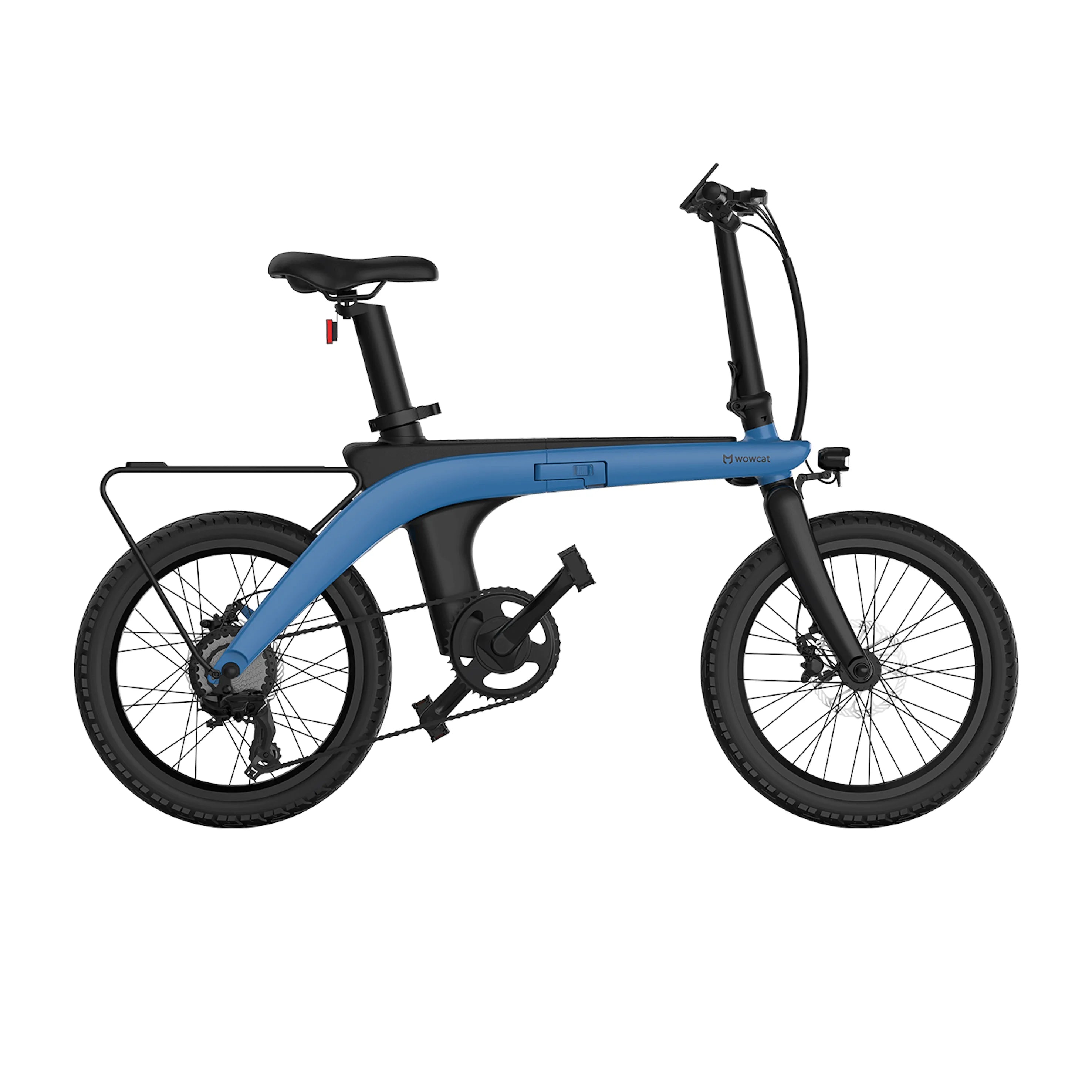Cycling enthusiasts know that a passion for biking goes hand in hand with a commitment to safety, especially when the sun sets and visibility becomes a critical concern. In the realm of bicycle safety, lumen lights take center stage, serving as the unsung heroes that pave the way for nocturnal adventures and early morning commutes. In this article, we delve into the world of bicycle lumen lights, unraveling the mysteries of lumens, exploring the different types of lights available, and guiding you through the factors that make these illuminating devices indispensable for every cyclist. So, buckle up, or rather, light up, as we shed light on what you need to know to pedal safely in the dark.

What are Lumens?
Lumens are a unit of measurement that quantifies the total amount of visible light emitted by a light source. In simpler terms, lumens represent the brightness of a light. Unlike watts, which measure the power consumption of a light bulb, lumens directly indicate how much light the bulb emits.
When it comes to bicycle lights, understanding lumens is crucial because it helps cyclists determine how much visibility a light can provide. In general, the higher the lumen rating, the brighter the light. Here's a basic guide to lumens and their application in the context of bicycle lights:
Low Lumens (Less than 100): Suitable for urban commuting in well-lit areas where additional visibility aids are not as critical. These lights may serve as "be seen" lights rather than providing illumination for the rider.
Medium Lumens (100-500): Ideal for suburban or moderately lit environments. These lights are sufficient for most commuting needs and offer a balance between brightness and battery life.
High Lumens (500 and above): Designed for more demanding situations such as unlit roads or trails. High-lumen lights are essential for providing ample visibility on dark paths, ensuring the rider can see and be seen.
It's important for cyclists to consider their specific riding conditions and needs when selecting bicycle lights based on lumens. Factors like ambient lighting, riding speed, and the type of terrain will influence the appropriate lumen range for optimal safety and visibility. Additionally, advancements in LED technology have made it possible for lights with higher lumens to be more energy-efficient, extending battery life and enhancing overall performance.
Types of Bike Lumens Lights
When it comes to bike lumen lights, there are various types designed for different purposes and locations on the bicycle. Here are the main types:
Front Lights:
Headlights: Mounted on the front of the bicycle, these lights illuminate the path ahead for the cyclist. They come in various lumen outputs to cater to different visibility needs.
Rear Lights:
Taillights: Mounted on the rear of the bicycle, these lights enhance the visibility of the cyclist from behind. They are crucial for alerting motorists and other cyclists to your presence.
Combination Sets:
Front and Rear Sets: Many manufacturers offer sets that include both a front headlight and a rear taillight. These sets are convenient for cyclists who want a coordinated and comprehensive lighting solution.
Helmet Lights:
Mounted on Helmets: Some cyclists prefer additional flexibility by mounting lights on their helmets. This allows them to direct light where they are looking, offering a more dynamic lighting experience.
Wheel Lights:
Mounted on Wheels: These lights attach to the spokes or rims of the bicycle wheels, adding a visual element that enhances side visibility. While not primary lighting sources, they contribute to overall safety.
Modular Systems:
Expandable Systems: Certain bike light systems allow for modular expansion, enabling cyclists to add or remove lights based on their specific needs. This adaptability is useful for riders who may require different levels of illumination for various conditions.
Smart Lights:
Bluetooth-Connected Lights: Some advanced lights come with smart features, allowing cyclists to control them through smartphone apps. These lights may have additional functions like automatic brightness adjustment based on ambient conditions.
Specialized Lights:
Mountain Bike Lights: Designed for off-road cycling, these lights often have higher lumens to illuminate trails effectively.
Commuter Lights: Tailored for urban commuting, these lights balance brightness and battery life for consistent use in well-lit areas.

How Many Lumens Should a Bike Light Be?
The appropriate number of lumens for a bike light depends on various factors, including the type of cycling you do, the environment in which you ride, and your personal preferences. Here's a general guideline to help you choose the right lumen output for your bike light:
Urban Commuting (Well-lit Areas):
Front Light: 100 to 300 lumens
Rear Light: 20 to 100 lumens
Suburban Cycling (Moderately Lit Areas):
Front Light: 300 to 500 lumens
Rear Light: 50 to 100 lumens
Unlit Paths, Trails, or Rural Areas:
Front Light: 500 to 1000 lumens or more
Rear Light: 100 to 200 lumens
Mountain Biking (Off-road, Technical Trails):
Front Light: 1000 lumens or more
Consider additional helmet-mounted lights for dynamic illumination
It's important to note that these are general recommendations, and individual preferences may vary. Here are a few additional considerations:
Riding Speed: Faster speeds may require brighter lights to provide sufficient reaction time.
Terrain: Off-road or technical trails may require higher lumens for better visibility of obstacles.
Battery Life: A balance between brightness and battery life is crucial, especially for longer rides.
Backup Lights: Consider having secondary, lower-lumen lights as backups or for visibility from different angles.
Group Riding: If you often ride in groups, avoid extremely bright lights that could be distracting to fellow cyclists.
Regulations: Be aware of local regulations regarding maximum lumen output for bike lights, especially on roads shared with other vehicles.
Keep in mind that advancements in LED technology have led to more efficient lights, so a modern, well-designed light with fewer lumens might still provide excellent visibility. Experimenting with different settings and combinations can help you find the right balance for your specific cycling conditions.
Front Lights vs Rear Lights
Front lights and rear lights on a bicycle serve distinct purposes, both contributing to the overall safety of the cyclist, especially in low-light conditions. Here's a breakdown of the differences between front lights and rear lights:
Front Lights:
Illumination of the Path:
The primary purpose of a front light is to illuminate the path ahead for the cyclist. It enhances visibility of the road or trail, allowing the rider to navigate safely in the dark.
Alerting Others:
Front lights also serve as a means to make the cyclist more noticeable to oncoming traffic, pedestrians, and other cyclists. This is crucial for safety, especially at intersections or on roads with limited visibility.
Variable Brightness:
Front lights often come with adjustable brightness settings to accommodate different riding conditions. Higher lumens may be used for unlit paths, while lower settings can suffice in well-lit urban areas.
Mounting Locations:
Front lights are typically mounted on the handlebars of the bicycle, ensuring that the light is directed forward in the direction of travel.
Rear Lights:
Visibility from Behind:
Rear lights are designed to enhance the visibility of the cyclist from behind. They alert motorists and other road users to the presence of the bicycle, reducing the risk of rear-end collisions.
Different Light Modes:
Many rear lights come with multiple modes, including steady light and flashing modes. Flashing modes can be particularly effective in attracting attention.
Mounting Locations:
Rear lights are usually mounted on the seat post or attached to the rear of the bicycle frame. Some cyclists also mount additional lights on their helmets or backpacks for added visibility.
Compliance with Regulations:
In some regions, there may be specific regulations regarding the use of rear lights, especially when riding on roads shared with motor vehicles.
Combined Safety:
While each type of light serves a specific purpose, the combination of front and rear lights provides comprehensive visibility, making the cyclist more conspicuous from all angles.
In summary, front lights illuminate the path and make the cyclist visible to those ahead, while rear lights focus on enhancing visibility from behind. Together, these lights create a well-lit presence, promoting safety for both the cyclist and others sharing the road.
Rechargeable Lighting Systems
Rechargeable lighting systems have become increasingly popular for bicycles due to their convenience, sustainability, and cost-effectiveness. These systems typically use rechargeable batteries and can be powered through various sources, such as USB ports or wall outlets. Here are key aspects to consider when exploring rechargeable lighting systems for your bike:
Battery Type:
Lithium-Ion (Li-Ion) Batteries: Commonly used in rechargeable bike lights, Li-Ion batteries are known for their high energy density, lightweight design, and longer lifespan compared to other battery types.
USB Rechargeable:
Many modern bike lights come with USB rechargeable batteries, allowing cyclists to recharge them conveniently using a USB cable connected to a computer, power bank, or wall adapter. This eliminates the need for disposable batteries.
Battery Life:
Consider the battery life of the lighting system on a single charge. This is especially important for longer rides or if you plan to use the lights for extended periods.
Charging Time:
Check the charging time required for the battery to reach full capacity. Faster charging times can be advantageous, especially if you need to recharge the lights frequently.
Indicator Lights:
Many rechargeable lights have indicator lights that show the remaining battery level or charging status. This feature helps cyclists plan their rides and ensures they don't run out of power unexpectedly.
Water Resistance:
Ensure that the rechargeable lighting system has adequate water resistance or is fully waterproof, as cyclists may encounter various weather conditions.
Mounting and Adjustability:
Consider the ease of mounting the lights on your bike and whether they offer adjustable angles for optimal illumination.
Compatibility with Accessories:
Some rechargeable systems are designed to be compatible with additional accessories, such as external battery packs or alternative mounting options.
Integrated vs. Removable Batteries:
Some systems have integrated batteries that are not user-replaceable, while others allow users to replace the batteries. Consider the advantages and disadvantages of each option.
Warranty and Support:
Check the warranty and customer support offered by the manufacturer. A solid warranty provides confidence in the product's durability and performance.
Brightness and Modes:
Evaluate the brightness levels and modes offered by the lighting system. Some systems have multiple modes, including steady, flashing, and strobe settings.
Rechargeable lighting systems offer a sustainable and cost-effective solution for cyclists, reducing the environmental impact of disposable batteries and providing a reliable source of light for safe riding in low-light conditions.
Run Time and Battery Life
Understanding run time and battery life is crucial when selecting a bicycle lighting system. These terms refer to the duration a light can operate on a single charge or set of batteries. Here's a breakdown of these concepts:
Run Time:
Definition: Run time is the period during which a bicycle light can provide illumination before it needs to be recharged or have its batteries replaced.
Units: Usually measured in hours, run time indicates how long the light can stay on under specific conditions.
Battery Life:
Definition: Battery life refers to the overall lifespan of the battery in terms of charging cycles and longevity.
Units: Measured in charge cycles, battery life is an estimate of how many times the battery can be charged and discharged before it significantly degrades.
Factors Affecting Run Time and Battery Life:
Brightness Settings:
Higher brightness settings generally consume more power, reducing run time. Many lights have multiple modes, allowing cyclists to adjust brightness based on their needs.
Battery Capacity:
The capacity of the battery, often measured in milliampere-hours (mAh) for rechargeable batteries, plays a significant role in determining run time. A higher-capacity battery generally provides longer run time.
Light Type:
Different types of lights, such as LED or traditional incandescent bulbs, have varying energy efficiencies. LED lights are more energy-efficient and tend to offer longer run times compared to traditional bulbs.
Battery Type:
The type of battery used (e.g., lithium-ion, nickel-metal hydride) influences both run time and overall battery life. Lithium-ion batteries are commonly used for their high energy density and longer lifespan.
Temperature:
Extreme temperatures can affect battery performance. Cold weather, in particular, may lead to a reduction in run time.
Light Modes:
Some lights offer different modes (e.g., steady, flashing, strobe). The run time can vary depending on the mode selected.
Tips for Maximizing Run Time:
Choose the Right Brightness:
Use the appropriate brightness setting for your riding conditions. Lower brightness settings can extend run time.
Carry a Spare Battery:
For systems with replaceable batteries, carrying a spare can be a practical solution for longer rides.
Regular Maintenance:
Keep the light and battery contacts clean, and follow the manufacturer's guidelines for charging and storage.
Charge Before Long Rides:
Ensure the light is fully charged before embarking on a longer ride, especially in low-light or nighttime conditions.
By considering run time and battery life, cyclists can choose a lighting system that aligns with their specific needs and ensures a safe and well-illuminated ride.











